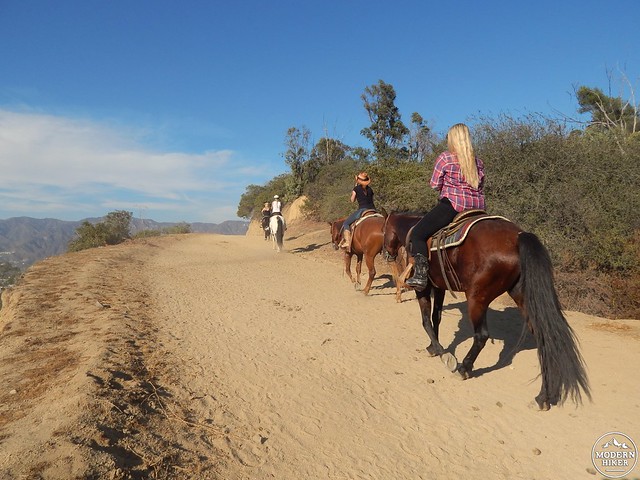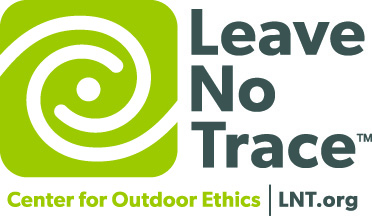In light of the ongoing discussion (and shared outrage) about one person’s recent graffiti spree in our National Parks, it seems the perfect time to explore what it means to truly “leave no trace.”
The phrase (often shortened to “LNT”) originated in the late mid-century, when recreational use of public lands grew exponentially as camping and hiking gear became more commercially available. People suddenly jonesed for the wild, and they were buying tents and hitting the trails in record numbers. Realizing that the increased visitation would wear thin on natural resources, the U.S. Forest Service spearheaded a movement to educate the public about having a “minimum impact” on the lands they enjoyed. These concepts of wilderness ethics were embraced by the National Park Service, Bureau of Land Management, Boy Scouts of America, Sierra Club, and National Outdoor Leadership School, who would go on to partner with the USFS to develop a formalized program, eventually leading to the creation of the aptly named Leave No Trace Center For Outdoor Ethics. These good folks came up with a list of Seven Principles, listed below in bold, that everyone should keep in mind while enjoying our wild spaces.
1. Plan Ahead and Prepare
It’s time to invoke your inner Scout! While a spontaneous day in the mountains is never a bad thing in my book, it’s important to make sure you know what you’re getting into. Check the weather (and dress/pack accordingly), know sunrise and sunset times, obtain required permits, and look into any land closures or other restrictions…and actually abide by them.
To that last point, a closed trail is a closed trail is a closed trail. Whether from fire damage or rockslide or endangered species protection, if the trail is shuttered, please respect that closure. There are people who live and breathe these lands every single day and if they need people to stay off their proverbial lawn, it’s for a darn good reason. True story: in my nascent hiking days, I willfully ignored a trail closure and ventured into a rockslide area, where I faced a dangerously deteriorating trail that I further damaged with my own two ignorant feet. I’ve tried to right the karmic balance for many years since by doing volunteer trail work when I can; if you’re interested in the same, California State Parks Foundation’s Park Champions Program is an excellent place to start.
2. Travel and Camp on Durable Surfaces
Even the smallest creature leaves a footprint, and my dearest fellow hikers, not to give you a complex, but we are not the smallest creatures. Best practices are to use pre-existing trails and campsites (at least 200 feet away from water sources) whenever possible. If you’re deep in the backcountry, forging some Grizzly Adams pioneer route in virgin territory, make sure you travel in small groups and spread out to avoid compounding your impact, only traveling and camping on “durable surfaces” – i.e. rock beats meadow. In fact, just about anything beats meadow. Basically: DON’T PUT ONE STINKIN’ TOE IN THE MEADOW. These are seriously fragile ecosystems where human impact can have devastating consequences.
Also, if you’re sticking to the trail, actually stick to the trail. That’s to say – that muddy puddle in the middle of your path is not full of flesh-eating acid and that deep rut is not going to swallow your leg whole – walk on through and avoid making little social routes off to the side that degrade the trail and its surroundings.
3. Dispose of Waste Properly
There is nothing more infuriating (well, besides parkland graffiti) than settling in under a shady tree for a well-earned lunch only to find yourself surrounded by clumps of used toilet paper and petrified turds.
The solution is to learn the ancient art of relieving oneself in the wild. The classic method is to dig yourself a cathole; instead of burying something 6 feet underground, you’re aiming for at least 6 inches down, no less than 200 feet away from water sources, campsites, and the trail. Prepare your materials – TP (unless you’re using some form of trail bidet – yes, this is a real thing), bagging system (I use a zippable lunch bag to store the used paper and a small opaque bag, stored in an outside pocket of my pack, to squirrel it away), and hand sanitizer. Next, get cozy and cop a deep squat, enjoy the view, and relax into it. Once finished, cover up your deposit with the dirt removed to create the hole (don’t cover it with rocks; you’re not actually a cat), stash used TP in your bagging system (NEVER BURY IT), and sanitize your paws. Congrats – YOU DID IT!!!
In some areas, “WAG bags” are required for your doo; the main Mt. Whitney Trail is probably the most popular example, because it’s a high-traffic trail and the ground is largely composed of impenetrable granite. These bags (the acronym stands for “waste alleviating gel”) are the stuff of hiker notoriety, for you are basically carrying your poo along for the duration of your hike. I have never prayed so hard for a round of serious constipation as I did while hiking Mt. Whitney.
Special note about peeing: Try to aim for rocks instead of vegetation – some animals (I’m looking at you, marmots) love salt, which means urine is like liquid gold to them. Next thing you know, they’ve plowed through an entire field of pee-soaked endangered flora.
Also, soap is waste. I know it’s clean and stuff, but when is the last time you saw dishsoap occur naturally in the wild? Exactly. If you need to get jiggy with some bubbles, make sure it’s biodegradable and cart away your water to wash at least 200 feet away from water sources.
Finally – haul out all of your trash…and if you really want to be a next-level steward, also remove any other (portable / non-dangerous) garbage you spot on the trail. I often just tuck it all in a mesh pocket on my pack or in a leftover lunch baggie, then dump it in the first garbage receptacle I encounter. Every day is Earth Day when you’re a hiker!
4. Leave What You Find
You’ve probably heard some version of the saying “Take only memories, leave only footprints.” Think about it – you might think that taking one eensy weensy little souvenir rock from Yosemite is no big deal, but if the estimated 4 million annual visitors to Yosemite each also pocketed a chunk of granite, the Valley would probably look downright naked. Instead, just enjoy the stuff around you while you’re in it. Use all of your senses – well…maybe not taste, unless you’re into that sort of thing. Take photographs, paint, write, draw, cry, laugh, meditate, buy some overpriced memento from the gift shop – do whatever you can to immerse yourself in the environment without actually altering it.
5. Minimize Campfire Impacts
In bone-dry California of all places, fire is a most serious thing. Fire is also an elementally human thing – comfort on a cold night, a way to make food, a light in the dark, a tool for socialization. As with the first principle above, always check to make sure fires are permitted where you’re traveling. In California, pretty much any open fire outside of a campground requires a free California Fire Permit. To snag this online, you’ll first view a video that teaches everything you need to know about building a safe fire and extinguishing it properly.
In the backcountry, if fires are allowed and you just need to get a fix, build them only in existing fire rings (NEVER create your own fire pit; rangers will usually be able to tell you if there are any existing ones in the area), and stoke them using only “dead and downed” wood that is no longer or wider than your forearm. Do not leave your fire to just “burn out” – actively extinguish the flames, then extinguish them again. In our droughty land, it takes only one tiny sliver of a hot ember to cause a devastating wildfire.
6. Respect Wildlife
Have you ever seen those videos of camcorder-wielding vacationers trying to feed bears and deer and moose and other wild animals, and then they freak out when said wild animal gets cranky and starts charging them on account of all that space invasion? Yeah – don’t be that guy.
Let us admire our furry friends from afar; become one with your zoom lens. Don’t try to entice, cajole, summon, or otherwise annoy the local fauna – you are not Doctor Doolittle, and I’d say it’s a safe bet that Bambi doesn’t want to come over for a nuzzle. On a similar note, keep Fido on-leash and in control…or at home.
Finally, don’t feed the animals – ESPECIALLY BEARS. Those dudes will eat anything. If you start leaving foodstuffs around unattended and Yogi begins looking at people as walking grocery stores, you’ve helped create a bear that’s habituated to humans and therefore potentially dangerous – and this puts rangers in the uncomfortable position of deciding whether to kill the bear as it might now pose a threat. Learn the required food storage techniques for the area you’re traveling in and actually practice them…in the case of a “bear bag,” I mean practice in the most literal sense.
7. Be Considerate of Other Visitors
One sunny summer day, my friends and I enjoyed a sweaty trek up to popular Icehouse Saddle. Upon arriving, we were immediately greeted with the crackly sounds of someone’s ancient boombox pumping out Korean soft rock. I find it slim coincidence that we were also nearly immediately swarmed by a pack of rather aggressive bees, since they were probably just as agitated as we were at the noise pollution.
This tenet of the Seven Principles can really be considered an umbrella for the other six – in short, this land was made for you and me (and our animal friends), so let’s share it with respect. The noises we hear in the wilderness should be of the wilderness – raging rivers, grunting bears, rustling leaves – not the sweet, sweet sounds of T Swift wailing out of your phone.
Consideration also extends to how we actually occupy space. If you’re coasting downhill on a narrow trail and spot some hikers wheezing their way up, step aside and give them the right-of-way. Similarly, step quietly to the downhill side of the trail if you notice any hoofed creatures headed your way; when spooked, horses tend to run uphill and a) you don’t want to turn into a person pancake, plus b) it’s not nice to scare horses. Finally, if your posse decides to take a break while hiking, park yourselves a bit off-trail if possible to avoid clogging up the main drag.
In summary? Use common sense. Treat the outdoors, its inhabitants, and its visitors with care and kindness. To quote Gandhi:
“What we are doing to the forests of the world is but a mirror reflection of what we are doing to ourselves and to one another.”
Nailed it.
The member-driven Leave No Trace Center for Outdoor Ethics teaches people how to enjoy the outdoors responsibly. The Seven Principles (in bold above) have been reprinted with permission from the Leave No Trace Center for Outdoor Ethics: www.LNT.org
Tags: Environmentalism, ethics, Leave No Trace, LNT, minimal impact, minimum impact, outdoor ethics








